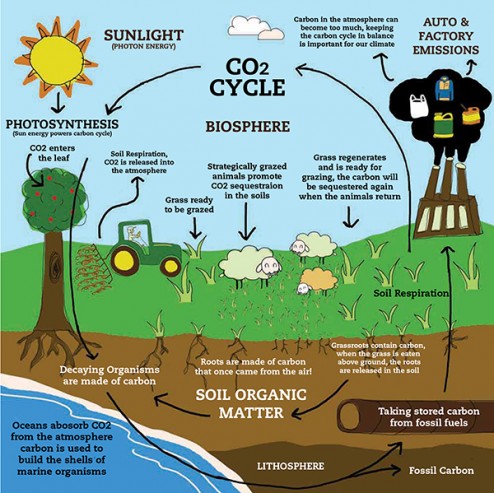Housekeeping: You have a test this week over Sections 4.1, 4.2 & 4.3. Be sure to review the Penguin Nation activity so that you can correctly apply the terminology to different scenarios. Do not forget that you have your G4 project to complete, and after Spring Break, you will have exactly three weeks to complete it. I still have not received a schedule from Fish & Tuleen.
Content Review:
Links: Ecosystems Energy Flow Biogeochemical Cycles SeaSlugForum
Workbook Lessons: Section 4.1: Section 4.2:
Section 4.3: #128. Section 4.4: #129, #130, #131 and #132.
Mission 4.3: Carbon Cycling
Mission Objectives. You should be able to...
1. Describe the role of carbon in an ecosystem.
2. Sketch and annotate the carbon cycle.
3. Explain the role of autotrophs in the carbon cycle.
4. What is the significance of using oil and gas as fossil fuels as they relate to the carbon cycle?
5. Analyze the graph on page 212. What trends do you notice?
How do we go from living to non-living? There are several cycles that you should become familiar with: carbon, nitrogen, oxygen, phosphorous and water, but make sure you understand in detail the steps of the carbon cycle.
Here is a lovely little interactive that you should complete. When you have finished the
interactive, screen shot your quiz score and show it to me. Below is a short video over the carbon cycle.
Content Review:
Links: Ecosystems Energy Flow Biogeochemical Cycles SeaSlugForum
Workbook Lessons: Section 4.1: Section 4.2:
Section 4.3: #128. Section 4.4: #129, #130, #131 and #132.
Mission 4.3: Carbon Cycling
Mission Objectives. You should be able to...
1. Describe the role of carbon in an ecosystem.
2. Sketch and annotate the carbon cycle.
3. Explain the role of autotrophs in the carbon cycle.
4. What is the significance of using oil and gas as fossil fuels as they relate to the carbon cycle?
5. Analyze the graph on page 212. What trends do you notice?
How do we go from living to non-living? There are several cycles that you should become familiar with: carbon, nitrogen, oxygen, phosphorous and water, but make sure you understand in detail the steps of the carbon cycle.
Here is a lovely little interactive that you should complete. When you have finished the
interactive, screen shot your quiz score and show it to me. Below is a short video over the carbon cycle.
In your notes, sketch a diagram of the carbon cycle. Use the below image as a guide. Annotate the sketch so that you know what happens at each location.
You will complete Workbook Lesson #128 in class today, but you should complete Lessons #125-127 for homework.
You will complete Workbook Lesson #128 in class today, but you should complete Lessons #125-127 for homework.

 RSS Feed
RSS Feed